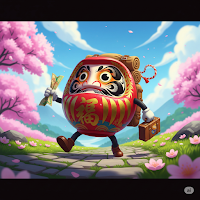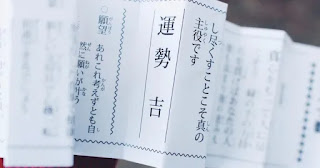⛩️ What Is a Torii? The Gentle Gateway Between Worlds
You’ve probably seen them during your travels in Japan—tall, red gates standing at the entrance of shrines.
These are called torii, and while they’re familiar sights, have you ever stopped to wonder what they really mean?
Today, let’s explore this beautiful symbol of Japan and the quiet wisdom it carries.
⛩️ A Torii Marks the Beginning of the Sacred
A torii is more than just a decorative gate—it’s a boundary.
It marks the transition from the human world to the realm of the gods.
In modern terms, you could think of it as the “front door” to a divine home.
That’s why people naturally straighten their posture when passing through, offering a small bow before entering.
It’s a graceful Japanese custom that says, “I’m entering with respect.”
📜 Where Does the Word “Torii” Come From?
Interestingly, no one knows the exact origin of the word torii.
But here are a few popular theories:
-
It may come from the idea of a perch for sacred birds—“tori” (bird) + “i” (to sit).
-
Some believe it’s inspired by the Indian torana, an archway in Buddhist architecture.
-
Another theory is that it evolved from the phrase toori-iru (to pass through and enter).
Whatever the origin, they all suggest one thing:
A torii is the entrance to something holy.
🔴 Why Are Torii Often Red?
Most torii are painted a vivid vermilion red, and that color has deep meaning in Japanese culture.
Red is believed to:
-
Ward off evil spirits
-
Symbolize life and vitality
It’s a protective color, perfect for marking sacred spaces.
(And for wooden torii, the paint also serves a practical purpose—it protects against rot and insects!)
🚶♀️ Simple Manners for Passing Through a Torii
In Japan, your visit to a shrine doesn’t start when you clap at the altar—it starts the moment you pass under the torii.
Here are a few simple manners to keep in mind:
-
Bow slightly before walking through
(Even a small nod shows respect.) -
Avoid the center path
(The middle is believed to be the gods’ path—walk slightly to the side.) -
Keep a quiet heart once inside
(It’s a place for reflection and calm.)
These aren’t strict rules, but gentle reminders to walk mindfully—as if you’re entering someone’s sacred home 🍃
💬 A Final Thought from “Daruma”
A torii isn’t just a structure—it’s an invitation.
It invites us to pause, reflect, and reconnect with something beyond the everyday.
Even on busy or difficult days, if you happen to pass by a torii, try stopping and offering a small bow.
You might not see it, but something shifts inside.
A quiet sense of peace may settle in your heart.
It’s the kind of space that makes you want to whisper, “I’m home.”
That’s the quiet power of the Japanese torii—a warm, invisible bridge between our world and the sacred one 🌿⛩️




Comments
Post a Comment